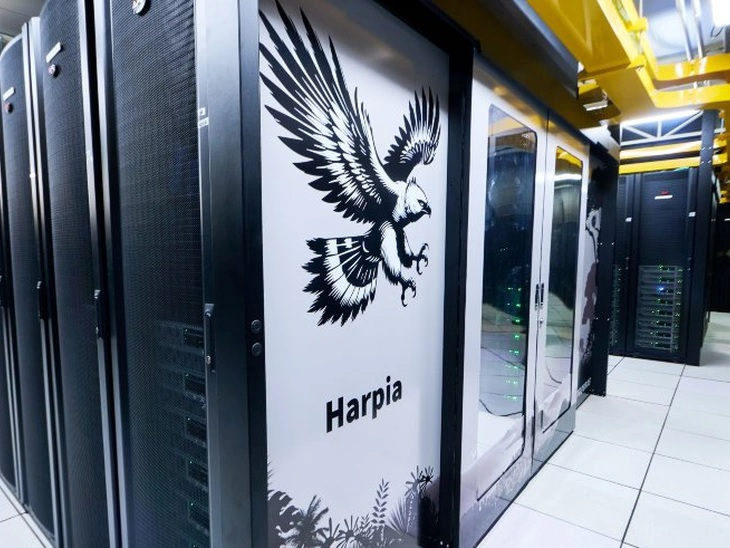Petrobras puts the Harpia supercomputer into operation
The R$435 million giant will help the company maintain its leadership in computational capacity in Latin America and, consequently, in oil exploration and production development in Brazil
Petrobras Agency10/10/2025 11:05

Petrobras has put the Harpia supercomputer into operation. The machine, equivalent to 10 million cell phones or 200,000 laptops, will help the company maintain its leadership in processing capacity in Latin America. Valued at R$435 million, it is the largest of the five new supercomputers purchased by the company, which together cost R$500 million and will increase Petrobras’ computational capacity by more than 60%.
The acquisition of new supercomputers is strategic in keeping the company at the technological forefront of the oil and gas sector in subsurface seismic imaging. Petrobras’ trajectory is marked by the constant pursuit of excellence in everything it does. That is why the company invests in R&D&I and in the most advanced technological resources, whose results are recognized by both the industry and society.
The new HPC, High Performance Computer, will be used by Petrobras geophysicists to process raw seismic data and transform it into detailed images of the subsurface. “It’s like creating a 3D map of the rock layers beneath the surface, with much sharper and more accurate images of geological structures—essential for identifying petroleum systems and potential oil and gas reservoirs,” explains Petrobras Exploration and Production Director, Sylvia Anjos.
By renewing and expanding its capacity for processing geophysical and geological data, the company will obtain faster and more accurate results for the operational challenges of ultra-deepwater environments and new exploratory areas, such as the pre-salt and the Equatorial Margin.
“Obtaining more detailed seismic images of the subsurface allows us to refine reservoir behavior simulations, enabling more efficient production. In addition, large computational capacities allow Petrobras to compete globally, attract partnerships, and seize business opportunities,” highlights Clarice Coppetti, Corporate Affairs Director. In R&D&I projects alone, between 2025 and 2029, US$4.2 billion are planned—an increase of 17% compared to the previous plan.
A Giant
The renewal of the supercomputers is part of the company’s strategy to keep its technological infrastructure up to date. The Harpia HPC weighs about 50 tons and measures 50 meters in length, considering all parts in a straight line. It will have around 146 PFlops Rpeak. One Petaflop (PFlop) equals one quadrillion Flops, or floating- point operations per second. Once installation is complete, it will single-handedly replace the Fênix, Atlas, and Dragão HPCs, which will be decommissioned—a normal process in the computing industry.
Schedule
Other supercomputers, such as Ada Lovelace, dedicated to geostatistics, and Capivara, focused on seismic imaging, are already in operation at the Data Processing Center of Petrobras’ Research Center, Cenpes. Quati, currently in the testing phase, is expected to begin operations this month and will also be used for seismic analysis. Tupã 2, scheduled for the first quarter of next year, will be dedicated to geophysical multiphysics methods—a technology that allows the simultaneous study of different subsurface rock and fluid properties, such as density and electrical resistivity. The five supercomputers were purchased from Lenovo, the company that won the public bidding process.
For the past five years, Petrobras has ranked as the Latin American leader in the Top500.org ranking, which evaluates the world’s largest High Performance Computers (HPCs). Harpia will also be eco-efficient, balancing processing power with energy consumption. Sustainability was a focus from the supercomputer’s initial design to the choice of the most efficient technologies. Energy use considerations also guided the design of the room where the machine will be installed, which was specifically engineered to operate with the lowest possible energy consumption.
The company continuously invests in innovation, research, and technology development that lead to new discoveries and ensure the energy security Brazil needs.



